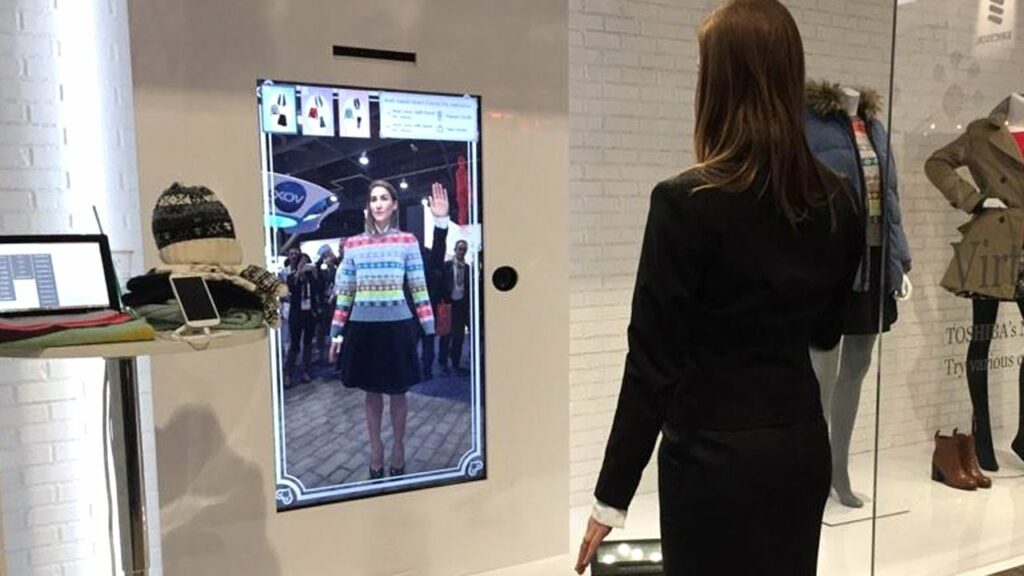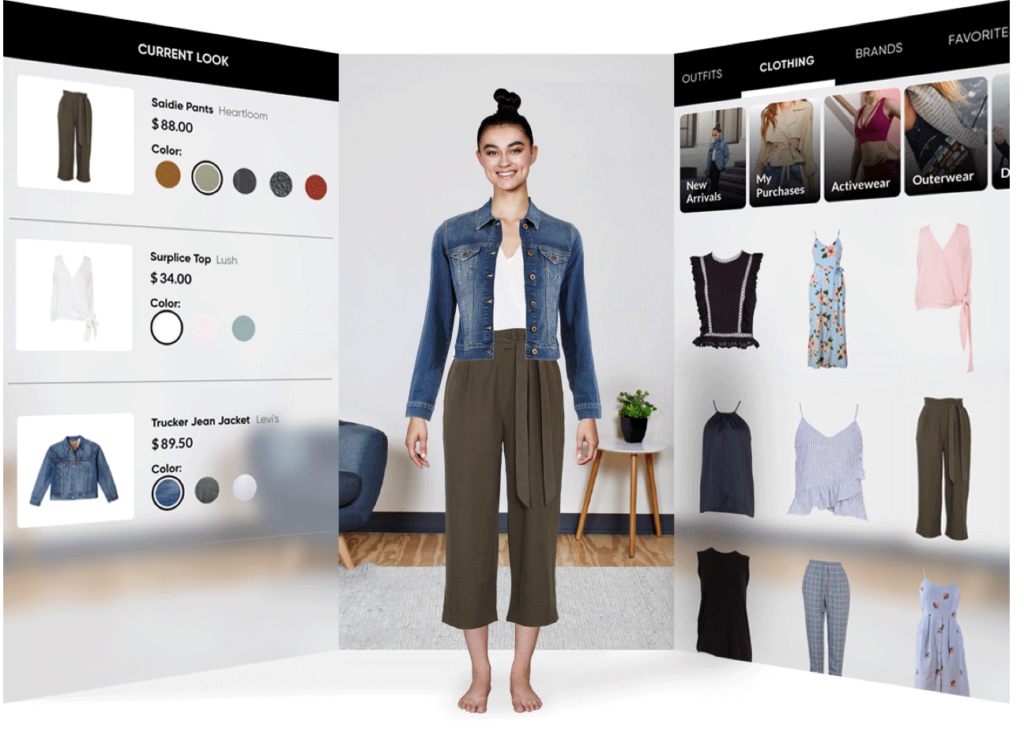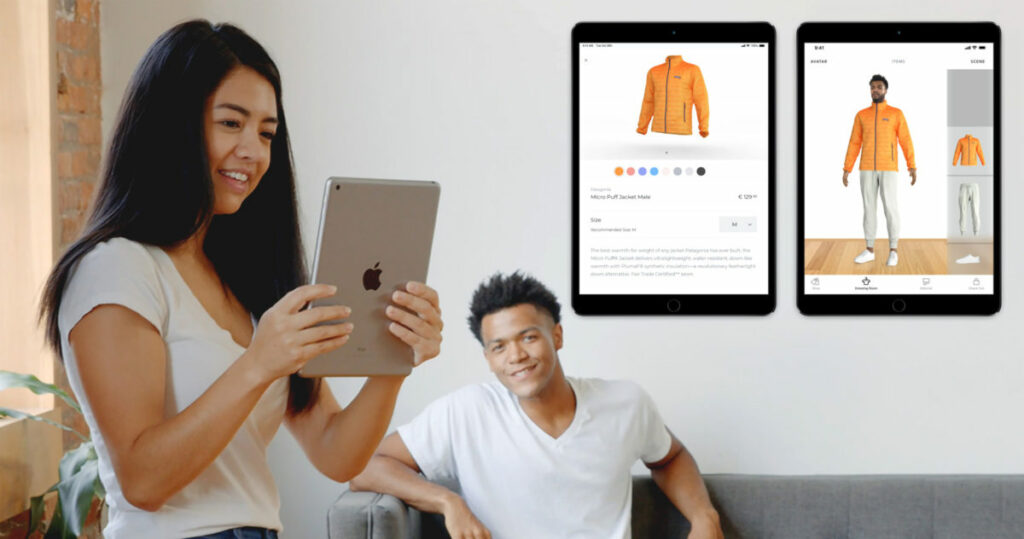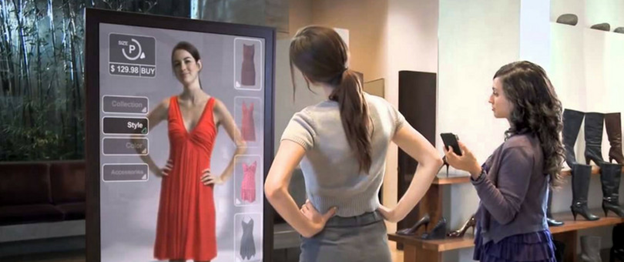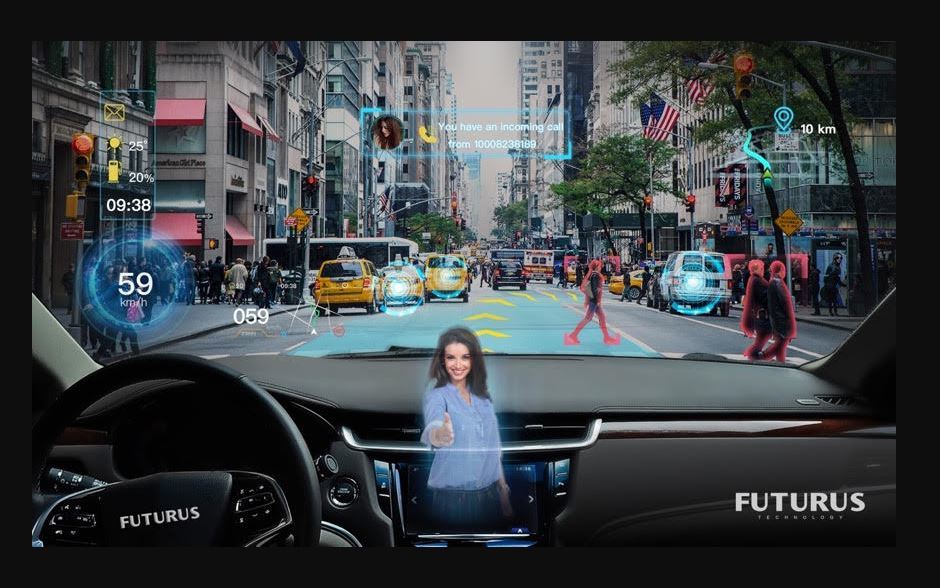SUSTAINABILITY X TECHNOLOGY
How can online shopping become more convenient and sustainable through interaction design?

The fashion industry constitutes one of the biggest players in the world economy. In the last decade, shopping for clothes online has gained a lot of popularity, leading to the global growth of e-commerce and m-commerce. An increase of global e-commerce fashion revenues from $481.2 billion in 2018 to $712.9 billion in 2022 is expected. Since some 20% of online purchases are made via mobile phone, retailers are creating mobile applications to improve the user experience for online shopping. The industry is strongly driven by competition, which makes it all the more important to build connections with customers and offer an experience rather than a mere product.
The success of e-commerce fashion websites or apps depends on the confidence that customers have in their use. In order to increase confidence and generate trust, visual aspects, as well as usability of the website or application, need to be taken into account. Fashion brands in particular are facing certain challenges in online customer experience because customer satisfaction is mainly based on product aesthetic and product fit. The deriving key obstacles in fashion e-commerce are therefore wrong size and bad fit, leading to high return rates. To improve customer experience online and reduce return rates, the integration of smart technologies and service design is enhanced in terms of virtual fitting rooms. Since the beginning of the COVID-19 pandemic, the technology of trying on clothes without touching them has become more popular. By using AR or AI, customers can use their mobile device to try virtually selected garments on a 3D avatar with body features resembling their own or to scan their own body to create a 360-degree 3D model. Such technologies could help customers to make more intentional decisions and build a slower, more sustainable relationship with fashion. In addition, pre-order systems are deployed to counteract overproduction and reduce waste of resources. Offline fashion stores could take recourse to such systems by equipping retail space with virtual mirrors instead of pre-made garments and changing rooms.
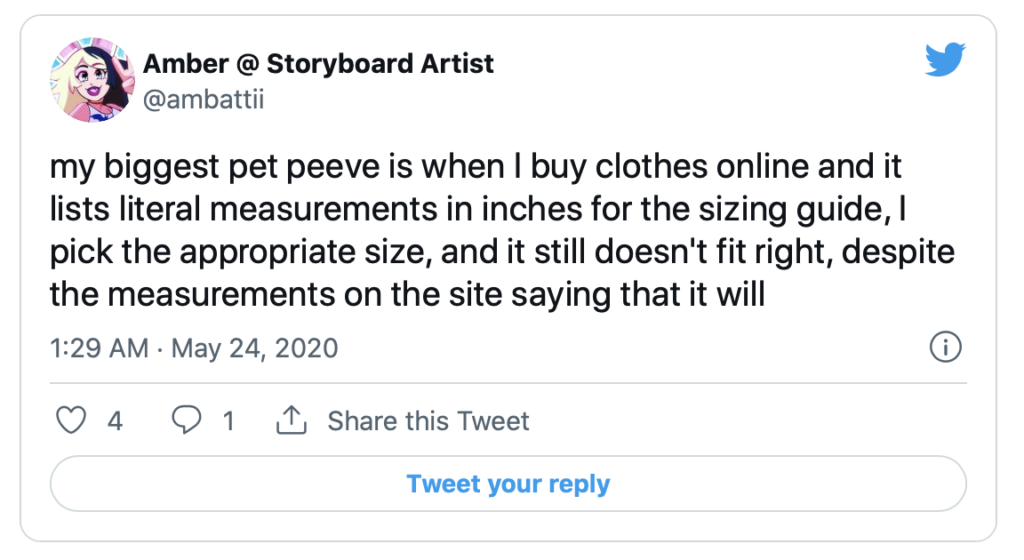
Virtual fitting rooms could help online shoppers increase their purchase confidence.
The questions that need to be posed in that context are as followed.
- What is the most effective way to use this technology?
- How can this technology transform service touchpoints?
- How can this technology be explored in the future from a sustainable design perspective?
- How can a virtual system be easy to use for customers?
References
Augmented Reality Platforms for Virtual Fitting Rooms:
Publication by Kostas Kapetanakis and Ioannis Pachoulakis on Researchgate
Influence of Website Design on E-Trust and Positive Word of Mouth Intentions in E-Commerce Fashion Websites: Publication by Antonio Trigo and Pedro Manuel do Espírito Santo on Researchgate
Unlocking the Potential of the Salesperson in the Virtual Fitting Room:
Publication by Eirini Bazaki and Vanissa Wanick on Researchgate
User Research and Real User Problems: Improving the User Experience of Online Shopping:
Publication by Lauren Ciulla on Researchgate
Online Clothing — a UX Case Study:
https://uxplanet.org/online-clothing-a-ux-case-study-13d9b7f5c1c8
Virtual Dressing Rooms: A Guide For Fashion Retailers:
https://www.forbes.com/sites/forbestechcouncil/2021/09/16/virtual- dressing-rooms-a-guide-for-fashion-retailers/?sh=57eb6e5eb87e
What are Virtual Fitting Rooms and Why Should Retailers Use Them?
https://www.shopify.com/retail/virtual-fitting-rooms

